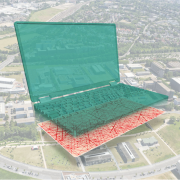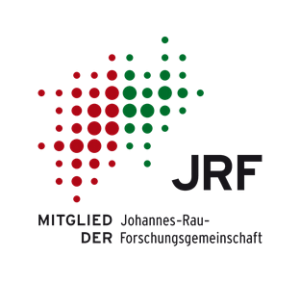Nanodiag BW: towards a new generation of biosensors based on nanopores
 Nanopores are channels with molecular dimensions. Used in biosensors, they can be used to characterize and distinguish individual molecules. The Cluster nanodiag BW has received major funding from the German Federal Ministry for Education and Research within the “Cluster4Future” initiative, with the goal of advancing nanopore technology for identifying epigenetic factors that influence diseases. AMO GmbH is one of the partners of the cluster, contributing its expertise in nanostructuring to the development of a scalable nanopore-technology based on 2D materials.
Nanopores are channels with molecular dimensions. Used in biosensors, they can be used to characterize and distinguish individual molecules. The Cluster nanodiag BW has received major funding from the German Federal Ministry for Education and Research within the “Cluster4Future” initiative, with the goal of advancing nanopore technology for identifying epigenetic factors that influence diseases. AMO GmbH is one of the partners of the cluster, contributing its expertise in nanostructuring to the development of a scalable nanopore-technology based on 2D materials.
Clusters4Future is an initiative launched in 2019 by the German government as part of the High-Tech Strategy 2025. It is an open-topic competition for funding regional innovation-networks that combine players from science and academia, industry and society to tackle societal challenges by tapping into emerging technologies. The funding for each Cluster is up to €45 millions for nine years. AMO has been successfully involved in the first two calls of the initiative, first with the Cluster NeuroSys, coordinated by Prof. Max Lemme, and now with the cluster nanodiag BW, coordinated by Prof. Felix von Stetten from the Hahn-Schickard Institute in Freiburg.
Nanopore technology for the molecular diagnostics of the future
While the Cluster NeuroSys targets neuromorphic hardware for artificial intelligence applications, nanodiag BW pursues the vision of developing miniaturized single-molecule analyzers based on nanopore technology, to improve the prevention, therapy, and follow-up of diseases. This new technology is based on the measurement of minute ionic currents through tiny pores – thousand times narrower than a human hair – fabricated in insulating membranes. When biomolecules, e.g. DNA or peptides, enter the pores, they partially block the current. The resulting current blockade provide information about the type, sequence or modification of these biomolecules. Compared with other analytical methods such as mass spectrometry, nanopore technology offers better specificity and, with appropriate system and process integration, can allow decentralized applications, e.g. for point-of-care (POC) diagnostic, without specialized personnel.
AMO is somewhat of an outsider in the cluster nanodiagBW, in the sense that it is one of the only three partners not located in Baden Württemberg (the other two are AIXTRON SE and RWTH Aachen University). Most of the activities of nanodiagBW are indeed centered around Freiburg, Stuttgart and Ulm, and build on the extensive expertise already developed at the University of Freiburg and at the Hahn-Schickard Institute on nanopores in biological membranes.
The Solid-State Nanopore Analyzer
AMO and the other partners in North-Rhein Westphalia are involved in one of the most exploratory parts of the Cluster nanodiagBW: the sub-project “Solid-State Nanopore Analyzer”, which aims at developing single-molecule sensors based on nanopores in solid-state membranes. These promise several advantages with respect to “conventional” nanopores in biological membranes, such as robustness, flexibility, and better prospect for industrial manufacturability and integration with read-out electronics. However, the technology for solid-state nanopores is still in its infancy and there are unsolved problems in concept, design, fabrication, and functionalization. The project “Solid-State Nanopore Analyzer” aims to solve these problems by bringing together competences from materials science, MEMS and CMOS technology, nanostructuring processes, surface functionalization, modeling and simulation, machine learning methods, as well as innovative microelectronics and microfluidics.
AMO is contributing to the project its long-standing expertise in the deposition of 2D materials and the transfer of these layers onto standard semiconductor wafers. In addition, AMO will also utilize its expertise in nanoscale structuring of those materials by means of electron beam lithography and dry etching.
“I’m looking forward to utilize our experience in nanofabrication and 2D materials for medical diagnostics, together with colleagues from various other scientific disciplines,” says Dr. Jens Bolten, head of AMO’s Nanostructuring group.
The focus in this project is on the development and optimization of processes for realizing structures with ultra-high resolution, using lithography and tailored dry-etching processes. The project “Solid State Nanopore Analyzer” is coordinated by Prof. Alfons Dehé of Hahn-Schickard together with Dr. Franz Lärmer of the Robert Bosch Research Center in Renningen, and it is funded with approximately €5.4 million.
More information on the Cluster website: https://www.hahn-schickard.de/en/nanodiag
The Cluster nanodiag BW is funded by the German Federal Ministry for Education and Research (BMBF) through the “Cluster4Future” initiative.







